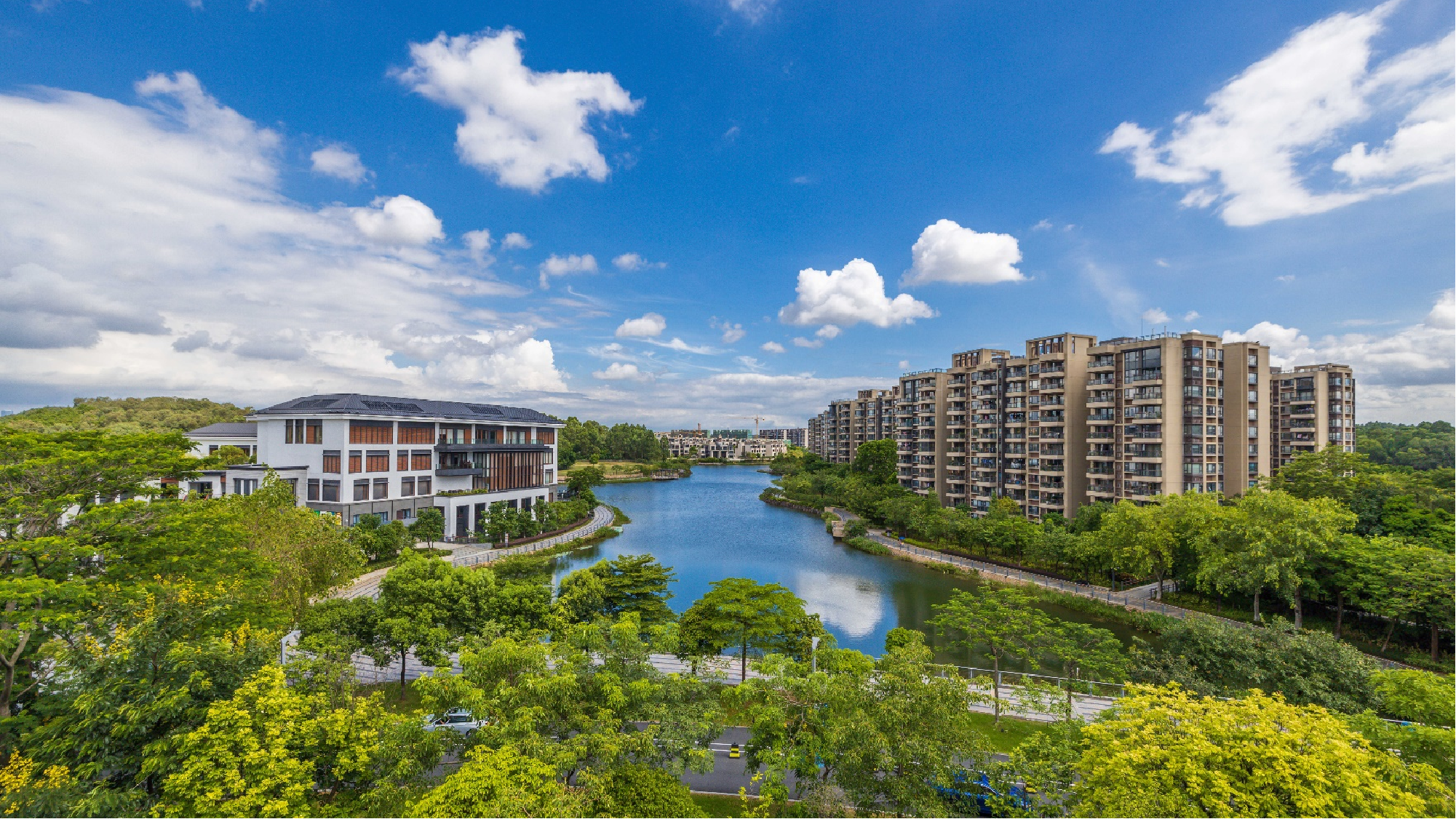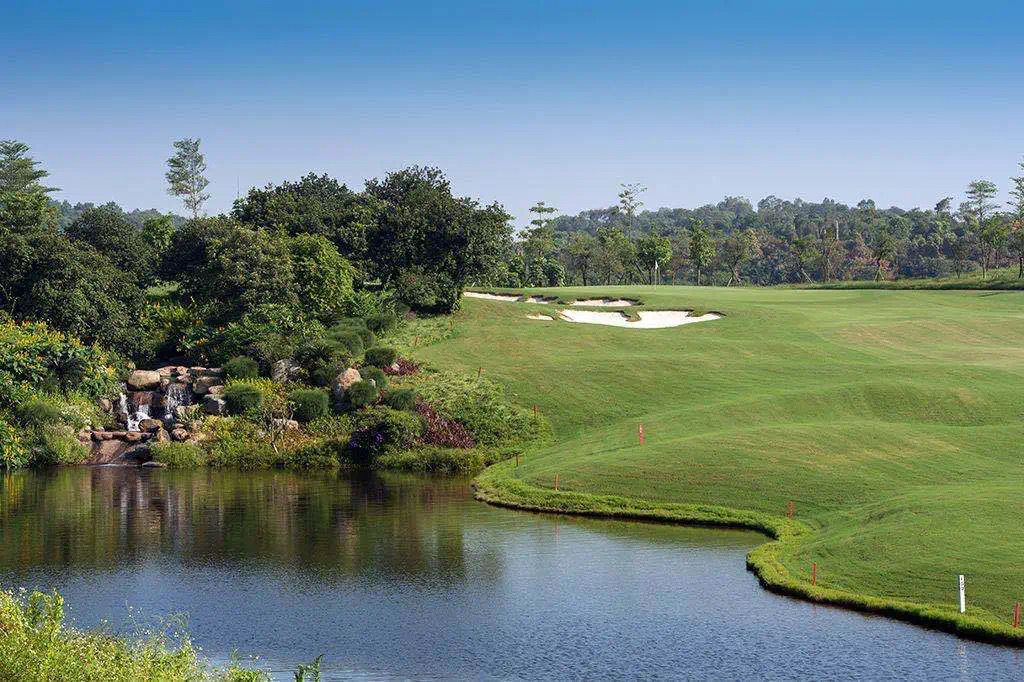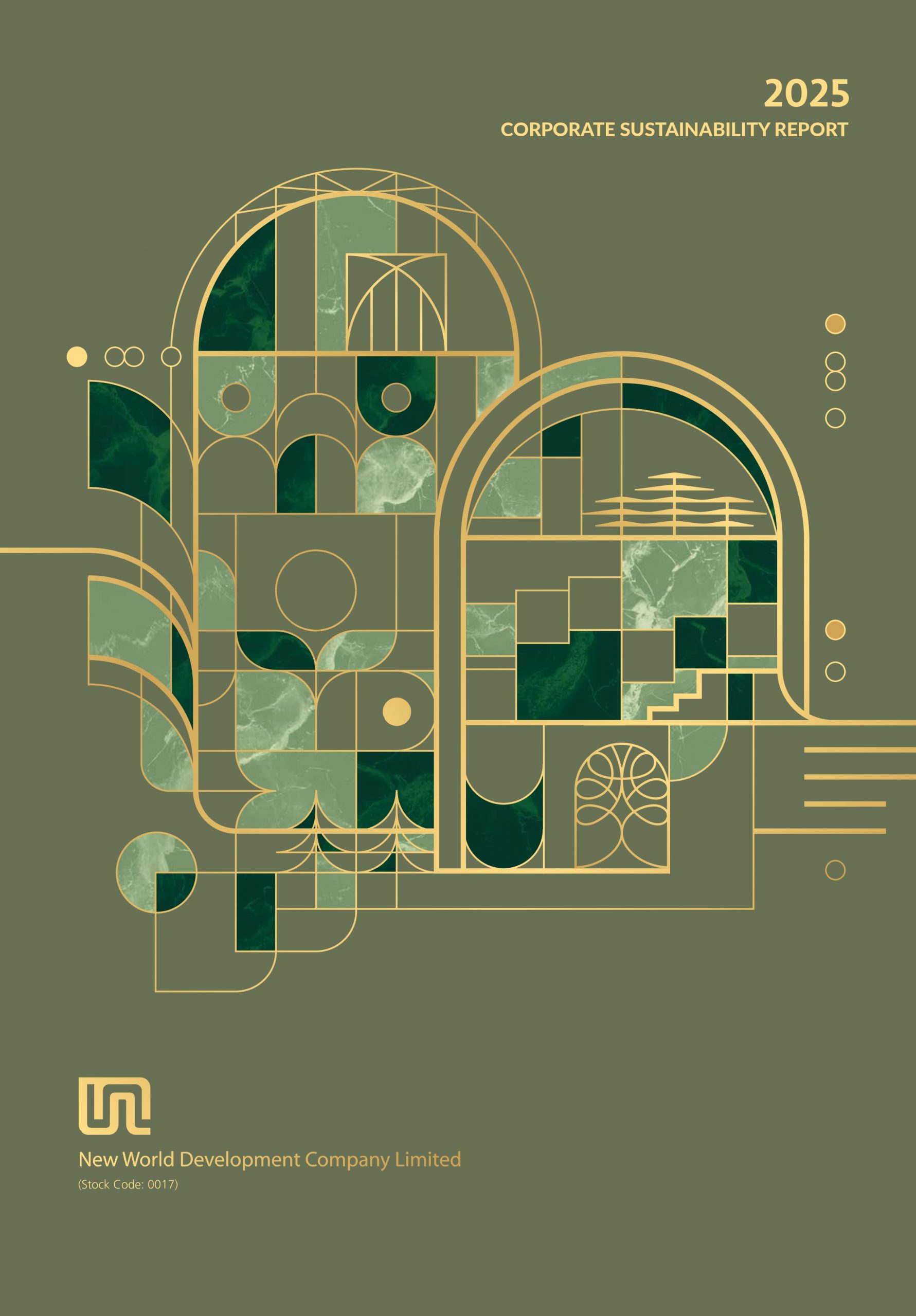Biodiversity Protection
Major biodiversity loss and ecosystem collapse are one of the top five global risks for the next ten years. Extraction of natural resources and pollution are among the key drivers of biodiversity loss, with severe implications for the economy and public health and well-being, as well as for our supply chain. We hope to protect biodiversity by enhancing our operations and raising public awareness.
A Group-level Biodiversity Policy has been introduced to illustrate our commitment to protecting the natural environment throughout the design and operation of our products and services. We strive for Sustainable SITES Initiative (“SITESTM”) certification by the U.S. Green Building Council where possible – a framework for sustainable landscape development projects with a focus on landscape, ecosystems and biodiversity.
 The Canton First Estate is located in the heart of the Guangzhou-Foshan Metropolitan Area, spanning approximately 300 hectares. It features 33 hectares of natural lakes and 47 hectares of forests, offering significant biodiversity value. Developed by New World China Land Limited (NWCL), the project emphasizes the “integration of nature and life” with regular biodiversity monitoring programmes in place to maintain landscape quality. The study was conducted from August 2024 to June 2025 to investigate nature-related issues on ecological resources, regional policy requirements, and community positioning.
The Canton First Estate is located in the heart of the Guangzhou-Foshan Metropolitan Area, spanning approximately 300 hectares. It features 33 hectares of natural lakes and 47 hectares of forests, offering significant biodiversity value. Developed by New World China Land Limited (NWCL), the project emphasizes the “integration of nature and life” with regular biodiversity monitoring programmes in place to maintain landscape quality. The study was conducted from August 2024 to June 2025 to investigate nature-related issues on ecological resources, regional policy requirements, and community positioning.
While the Guangzhou-Foshan Metropolitan Area is not explicitly designated as a priority area for biodiversity conservation in the Guangdong Province Biodiversity Conservation Strategy and Action Plan (2023–2030), we are proactively aligning with — and going beyond — the ecological protection requirements set for the broader Pearl River Delta region. NWCL has appointed a nationally accredited association to conduct biodiversity study on the Canton First Estate using location-specific approach, referencing relevant biodiversity-related National Standards of the People’s Republic of China, such as the Technical Guidelines for Biodiversity Monitoring. The survey primarily employed the field line transect sampling method. Within transect boundaries, observations on population counts and habitat context were recorded using the visual encounter survey technique, supplemented by digital photographic documentation.
The research examined amphibians, reptiles, birds, insects, and plant species in accordance with industry standards on survey design, photographic documentation, and species counts to enable comprehensive analysis. Based on the study results, we successfully identified the following key species for targeted monitoring and control measures:
• 6 amphibian and reptile species with significant ecological, scientific, and social value;
• 53 bird species, six of which are classified as Level 2 National Protected Wild Animals;
• 105 insect species; and
• 62 plant species, requiring special attention given to the presence of invasive alien plants to protect native biodiversity.
The study confirmed that the Canton First Estate supports rich biodiversity, underscoring the importance of maintaining ecosystem health. No significant biodiversity threats were identified during the monitoring period.

Located within the project site, the Foshan Golf Club serves as a vital stopover for overwintering migratory birds. In recognition of its ecological significance and status as a tournament venue, we are committed to upholding stringent provincial environmental safeguarding standards. Biodiversity conservation is therefore critical to the project’s long-term sustainable operations, particularly in terms of financial continuity, regulatory compliance, and meeting expectations from customers and the community.
This pilot study sets a solid foundation for developing enhanced biodiversity protection measures and adopting effective management strategies across three key areas: habitat restoration, species diversity conservation, and vegetation enhancement. We aim to protect the key species identified in the survey by actively preserving freshwater ecosystems and wetland habitats. Meanwhile, we will promote the growth of native plants to improve overall ecosystem health and resilience.
Looking ahead, we plan to expand this study to other development projects as part of a Group-wide assessment on nature-related risk and opportunities. The pilot project lays a foundation for NWD to review its biodiversity-related policies, risks assessments, and targets for priority areas, with the goal of working towards no net loss in the future.
To promote biodiversity conservation, the New World Charity Foundation is committed to supporting organisations that protect biodiversity and nature. Since September 2022 , the New World Charity Foundation has been funding the Hong Kong Biodiversity Museum (HKBM) in collaboration with School of Biological Science at the University of Hong Kong. Opened in May 2021 , HKBM is Hong Kong’s first museum dedicated solely to biodiversity. A key mission of HKBM is to preserve and expand a collection of specimens that reflects the biodiversity found in Hong Kong and beyond.
Since its launch, HKBM has welcomed over 60,000 visitors. The museum also organises various external exhibitions to raise community awareness about biodiversity. For example, several displays and dioramas showcasing specimens in their natural habitats or artistic settings have been featured at Nature Discovery Park at K11 MUSEA and other New World Development locations, effectively communicating important messages about biodiversity. Additionally, HKBM has developed a series of informative posters and hundreds of posts highlighting local and overseas species, which are freely accessible in digital format to increase public awareness and understanding of biodiversity.
Furthermore, HKBM conducts monthly surveys at the Nature Discovery Park to catalogue and monitor arthropods, successfully identifying 58 species to date. Specimens collected during these surveys are showcased on social media through a series titled “Meet Your Neighbours” highlighting the remarkable diversity of insects in Hong Kong.
HKBM is also committed to training the next generation in environmental education, collection management, and curation. Each year, the museum offers a comprehensive training program for students from both local and international universities. Since its opening, HKBM has proudly hosted over 120 interns and volunteers.

